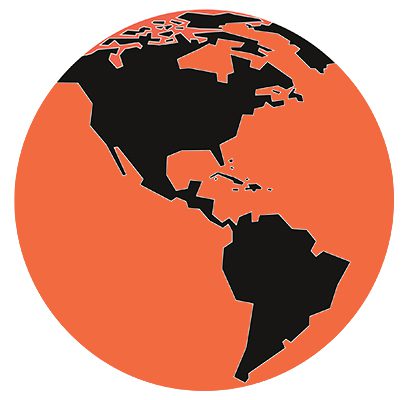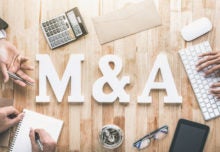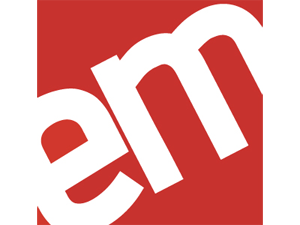Straight talk from event agency leaders on pushing through the pain points and evolving to meet the opportunities in the year ahead
For many event professionals, 2023 was the most promising comeback year that only kind of came back.
Demand for events was high, but the industry faced many challenges ranging from layoffs in major event sectors to geopolitical issues to inflation and more. Add to that, 2023 was the year that the industry had to prove its value (again, if you’ve been in the business for a while), or, anew to a whole new crop of clients and brand-side event organizations. With more emphasis on performance metrics among new c-suites and procurement teams, and lingering expectations from the pandemic era and all of the engagement metrics delivered by virtual events, agency executives found 2023 to be a year of rising expectations, volatility and change.
In part one of a two-part, discussion series, produced in collaboration with leading staffing agency Encore Nationwide, Event Marketer sat down with a panel of veteran experiential marketing executives to discuss all of it—the fast-changing event landscape ahead, the role Gen Z, AI and digital will play, and how agencies can fortify their teams and practices to thrive in what is sure to be a thrilling but roller coaster of a year ahead. Read on for candid ideas and perspectives guaranteed to inform your agency business in 2024, and check out part two of the conversation here.
THE PANELISTS:
- Christine Capone, President, MKG
- Jen Clines, VP of Client Strategy, Encore Nationwide
- Paddy Davis, EVP, Brand Experience, Allied Global Marketing
- Donnell Gavin, Head of Operations, BMF
- Melissa Mahon, EVP of Business & Operations, MAS
- Chris Schuett, COO, Little Cinema
- Jeff Stelmach, Global President, Spiro
- Moderated by: Jessica Heasley, Editor & Publisher, Event Marketer
EVENT MARKETER: How are you helping your clients prove the ROI of their events? Are there new performance metrics that can or should be deployed across events?
 CHRISTINE CAPONE, MKG: It’s a very custom conversation depending on the client that we’re speaking to. In certain scenarios, for better or for worse, we try to push for ROI and measurement conversations more than our clients want to have them. I think that might always be an industry challenge. Sometimes people just want to have a great time. So I think it will always be a push-and-pull conversation. That being said, we’ve certainly drilled down, and we continue to provide added ROI for our teams. When a client comes to us and says, ‘Here’s what I want to achieve,’ and they can’t put that into actual measurement, we’ll do it. And we’ll say, ‘Okay, here’s how we can measure this for you. And here’s what we’ll actually need from you in order to do it.’
CHRISTINE CAPONE, MKG: It’s a very custom conversation depending on the client that we’re speaking to. In certain scenarios, for better or for worse, we try to push for ROI and measurement conversations more than our clients want to have them. I think that might always be an industry challenge. Sometimes people just want to have a great time. So I think it will always be a push-and-pull conversation. That being said, we’ve certainly drilled down, and we continue to provide added ROI for our teams. When a client comes to us and says, ‘Here’s what I want to achieve,’ and they can’t put that into actual measurement, we’ll do it. And we’ll say, ‘Okay, here’s how we can measure this for you. And here’s what we’ll actually need from you in order to do it.’
PADDY DAVIS, ALLIED GLOBAL: I think it’s important to establish that results versus ROI are two very different things. And it can be easily mixed up. How many people attend something is not ROI. So I think having that conversation with a client at the beginning to establish, what are your KPIs? But then what’s the actual ROI we’re looking for? And I think for the industry that we’re in, it’s about pushing more towards that ROI metric that, like Christine said, is on a very individual basis for each client. Sometimes people just want to have a good time, which is a great point. But I think where you can get a little bit more accurate with it from an ROI perspective is if we can do something that, for example, leads to website visits. The client has a formula for how many people go to their website and for how many sales they’re probably going to get from that. So I think that’s where we need to start to differentiate the two between results and actual ROI.
MELISSA MAHON, MAS: Lately we’ve been looking at their entire ecosystem. Really looking at the cross section of who those guests are and not leaving out the partners that are in the room because their investment matters, too. So whether there’s an official sponsorship component or not, making sure that we really understand what those partners also need to get out of this experience. They’re not all always considered equally until there’s a problem. So we like to remind clients to stay in front of sentiment across their whole ecosystem.
JEFF STELMACH, SPIRO: The overall challenge is that traditional metrics don’t tell the whole story. We’re really prioritizing the need to measure beyond the situational data points into longer lens performance metrics. And the need for this came out of conversations we were having with clients in 2022 about what happens after the lights go off and everyone leaves; then what? How are we creating longer term, mutually beneficial value for both a brand and their customer communities beyond that moment in time? How do we capture that? We needed a way to examine the return on community, and now have a process that allows us to examine what happens in the ‘after’. Can we look at resulting pipeline sales, and assume a plausible contribution to that? Yes, and now we can also look at moving customer lifetime value into a community lifetime value and say with data informed certainty that, okay, this made an impression, a connection, and created the long-term impact we wanted. We connected a group of people together. Maybe it’s multiple communities based on what their mutual brand interests were. And that allows for ample nurturing on an ongoing basis. Now we can answer the questions around the ‘value of’ after the event. Now we can track that lifecycle after the lights go off.
CHRIS SCHUETT, LITTLE CINEMA: We’re making sure that before we commit to a project there’s alignment on what the results should be and what success looks like. Before we dive in we’re trying to understand first and foremost how our client is going to measure success and asking how they are collecting that information. We sometimes aren’t in the room when those decisions are determined but we are able to be more strategic if we have insight into what a client is tracking, how they are tracking it, and what ladders up to those metrics directly. From there we can inform our creative approach to directly influence those desired outcomes.
Knowing that out of, say, a consumer experience, you’re measuring talkability and sentiment, we then are going to focus on the event touchpoints that impact those metrics. And that informs where we invest the budget. If the past couple years of an experience or an event, there’s been a pain point that’s where we should be talking and guiding conversation for the next couple of events or if there is something we’ve done particularly well – how do we continue to improve upon that specifically.
It needs to be an open and transparent conversation on both sides.
 DONNELL GAVIN, BMF: I think the challenge of ROI really prompted us to move to a more integrated model and offer digital and PR services. We’ve been members of very effective interagency teams, but there’s a degree of risk when the success of your event is being measured by a KPI that’s predominantly being driven by another agency. If you do an incredible event where you feel like, at the end, everyone’s popping champagne but it doesn’t get the PR metrics, it can be perceived by client leadership as a failure or poorly executed event when in fact, it wasn’t. So where we can, even if we’re not doing the post-event pitching, we have our PR teams advise on the intricacies of the event design, while coordinating with our client’s PR teams, or, ideally, handle the post- event pitching, too. That way, there’s a little bit more control when we are assuring a client that, yes, we feel confident we can drive the ROI you’re looking for.
DONNELL GAVIN, BMF: I think the challenge of ROI really prompted us to move to a more integrated model and offer digital and PR services. We’ve been members of very effective interagency teams, but there’s a degree of risk when the success of your event is being measured by a KPI that’s predominantly being driven by another agency. If you do an incredible event where you feel like, at the end, everyone’s popping champagne but it doesn’t get the PR metrics, it can be perceived by client leadership as a failure or poorly executed event when in fact, it wasn’t. So where we can, even if we’re not doing the post-event pitching, we have our PR teams advise on the intricacies of the event design, while coordinating with our client’s PR teams, or, ideally, handle the post- event pitching, too. That way, there’s a little bit more control when we are assuring a client that, yes, we feel confident we can drive the ROI you’re looking for.
JEN CLINES, ENCORE: It’s really important to make sure that the field teams who are activating the event are aware of what success looks like for the program and what metrics they should be reporting. I know those conversations are happening, but they’re not always making it all the way down to the field teams. Then after the activation wraps, we receive questions from our clients that are harder to ask our teams after the fact. If our teams know in the moment and they can capture and track these details on site, they can provide much more accurate feedback. This also allows our Managers and Leads to brief the Brand Ambassadors and say, ‘These are the types of things that will be considered when evaluating program success. Can you provide any feedback or insight that you hear from consumers during the event?’ Sometimes the most valuable insights you get are from the Brand Ambassador who are engaging directly with consumers, so having this process in place can provide strong value to program evaluation and refinement.
EVENT MARKETER: Are event agency partners getting the access they need to the kind of information that helps them create strategies that can deliver against business goals? In the early years of the industry agency leaders said this was a struggle.
CHRISTINE CAPONE: This is part of the reason why experiential is so downstream, typically. And it’s something that we should all be talking to our clients about. Because, at the end of the day, if we can’t prove how we are impacting a business, we’re always going to be downstream. Oftentimes that can be the most frustrating part of what we do—not having the access and the information from the people that really own the information and are making the business decisions.
MELISSA MAHON, MAS: I think there is more opportunity in pitching a whole campaign strategy from social to OOH to the event. And really talking to them about a campaign where the event is the culmination instead of a one-off. We help them connect all those dots, and even if we don’t get the whole scope, in the end it was our idea that won, and that leads to deeper understanding and relationships.
EVENT MARKETER: How will the modern agency need to evolve to stay competitive in 2024 and beyond?
PADDY DAVIS: I think creativity will rise to the top. It always has. So I would put that first before you start to look at the use cases like tech, because ultimately, if you are creative in your approach or problem solving whatever the challenges or opportunities might be moving forward, you can adopt all of those things and put them into practice based on the brief that you receive and ultimately the response that you give a client. So from our perspective, I would always look at creativity as being a key factor for staying competitive.
JEFF STELMACH: So, table stakes of creativity, integrated tech and all the things we all need to keep doing really well aside, sustainability in those areas is the number one thing coming from us right now. Our clients are doubling down on their own ESG strategies and commitments and are looking to us to have a responsibility in that. We have some clients that require that we as a company have very specific sustainability protocols with supportive metrics we must be able to substantiate by 2025. And if we don’t achieve those, we don’t meet their partner list. So, we’ve a big commitment to this priority.
I think the other notable challenge for us all is, living in the ‘VUCA’ world, which is volatile, uncertain, complex and ambiguous. You must know the tone before you go into the design of an event. You must know the right approach to take in consideration to what’s happening in the world around us. And then you must lead a group of people within your agency to adopt a certain perspective, one that accepts that change is the norm. We can try our best to anticipate oncoming impacts, but if you look at the recession pressures from the end of 2022 and into Q1, we were reacting to unprecedented times. It’s the hardest thing in terms of running an agency, living in a constant change-agile state, while finding ways to avoid and stimulate against the natural fatigue and resistance it ultimately creates.
 MELISSA MAHON: I think we all thrive in that uncertainty, right? We see opportunity when change is afoot. You need a sense of awareness and empathy for whatever you are launching in the context of the greater world, because the landscape could literally change overnight. Didn’t everyone think 2023 was going to be a great year? And then it turned out to be unpredictable and volatile. We play very heavy in tech and all of their layoffs and reductions really affected our business. But we seized the opportunity to find new clients in other areas that we hadn’t been actively exploring. Forecasting is an art as much as it is a science.
MELISSA MAHON: I think we all thrive in that uncertainty, right? We see opportunity when change is afoot. You need a sense of awareness and empathy for whatever you are launching in the context of the greater world, because the landscape could literally change overnight. Didn’t everyone think 2023 was going to be a great year? And then it turned out to be unpredictable and volatile. We play very heavy in tech and all of their layoffs and reductions really affected our business. But we seized the opportunity to find new clients in other areas that we hadn’t been actively exploring. Forecasting is an art as much as it is a science.
CHRISTINE CAPONE: It’s taught me the importance of making sure you have cross-trained people. Because at the end of the day, you don’t know what’s going to happen to your business tomorrow. Sometimes when people completely reinvent their business model, it can create more problems than good. But I do think there’s something to be said in making sure that your people can do many things and can wear many hats. COVID certainly taught us that. In 2023, between tech, layoffs, the writers’ strike and more, we’ve had to have some fun internally with how we’re utilizing people and making sure capacity is where it needs to be. But I do believe that the investment in people—the cross-training of people and figuring out how to hold onto really great talent—is the best way to drive a business forward. It’ll fuel creativity. It’ll fuel the best ideas. It’s people at the heart of what we do.
DONNELL GAVIN: In addition to the headwinds impacting our business, they’re also impacting our staff. So, it’s about being really sensitive to the fact that someone may be highly impacted by geopolitical circumstances and we may not know it. We also may not know if that person is going to be at their best in that moment. Maybe an overnight load-in isn’t the project to give them? BMF is celebrating 20 years in business this year, and I’ve been with the agency for nearly 14 of those years. One of the key things I’ve learned in that time is that, in addition to having empathy for our clients and for our audiences, having empathy for our teams and figuring out how we all solve the problem together is essential, remaining flexible rather than being rigid about adhering to the initial plan.
MELISSA MAHON: There’s a sensitivity, right? Amongst your teams now that maybe wasn’t the same [timbre?] three years ago. And there is no getting around it. You have to be genuine in checking in and asking for their feedback. The soft skills in the talent management sector now are so critical and that directly translates to loyalty and retention. Everyone’s sentiment for how they feel they can contribute to the whole is its own form of currency. We all really want to be part of something.
JEFF STELMACH: It is a ‘Band of Brothers’ kind of mentality. I really love that our teams will ultimately come together. And while they may not share the same views on all things, when necessary, it’s all-for-one for the cause. It’s that ‘when the lights flip on the show has to go live,’ everyone’s in for that moment and they come together to support each other all the way through. That comradery is what marks most highly from our employee surveys as the best thing about working here. That element is the little ray of sunshine amongst all that craziness.
CHRIS SCHUETT: Like everybody in this room we’re thought advisors and strategic partners to our clients. The more conversations we have with a client that aren’t around just a singular project, but in the context of seasonality, trends and other industry happenings, the better. And if you’re not having those types of conversations, you’re not evolving as an agency.
The agency of the future is just going to look like the future. It’s going to evolve and adapt based on those types of conversations and what comes out of those conversations. Sometimes those are hard conversations to have, because it’s easy to sell the things you’re confident in. It’s harder to sell the things that are a little bit unproven, but that’s creativity and innovation. It’s a collaboration.
EVENT MARKETER: How has face-to-face engagement changed since last year? What trends do you see driving the ways brands engage with their attendees?
 JEN CLINES, ENCORE: The great news is that people are ready to engage again. In the past few years there has often been apprehension about approaching the experience or talking to new people. Even if you demonstrated adherence to all the safety regulations, some people just weren’t ready for it yet. But this year in particular, our Brand Ambassadors keep coming back to us and saying how much fun they have been having onsite. Part of that fun that they’re referring to is that feeling of connection and community at events, with people walking or even running up and saying, “What are you guys doing? How can I engage with this experience?”, then having a good time exploring the footprint and talking to not just the event staff, but also to each other and creating that lively atmosphere that makes events thrive.
JEN CLINES, ENCORE: The great news is that people are ready to engage again. In the past few years there has often been apprehension about approaching the experience or talking to new people. Even if you demonstrated adherence to all the safety regulations, some people just weren’t ready for it yet. But this year in particular, our Brand Ambassadors keep coming back to us and saying how much fun they have been having onsite. Part of that fun that they’re referring to is that feeling of connection and community at events, with people walking or even running up and saying, “What are you guys doing? How can I engage with this experience?”, then having a good time exploring the footprint and talking to not just the event staff, but also to each other and creating that lively atmosphere that makes events thrive.
MELISSA MAHON: What we are seeing in our activations is nobody wants to be talked at, right? They want to have an experience where they get to discover it themselves. So our strategy is designing guest experience so they feel like they’re happening upon this learning or discovering how this product is going to change their life instead of just showing them. So it’s a lot less show and tell, and a lot more an experience they can uncover or unpack themselves. And we find that they’re super game, they are willing and active participants and contrary to popular opinion, we find that their attention span Is longer. And if you add in a level of customization whether through an app or even photo op you get even more buy in. We are all creators now.
DONNELL GAVIN: I feel like we’re seeing two diametrically opposed trends. One is that people are still loving really novel event tech they haven’t seen before. But we’re also seeing a lot of passion for activations that would’ve been unimaginable in that immediate post-COVID world. We did tooth gems at an influencer event a couple of weeks ago. I remember 2021 being in a mask and now you’ve got someone gluing something to your teeth. Or we’re doing actual tattoos with a needle. And that was something that we had been doing for years and years before COVID, but now people want that literal high touch experience again.
JEFF STELMACH: 2022 was a year where everyone was so thrilled to be back together. But there was also that remaining sense of caution, the ‘should we be doing this?’ feeling. 2023 was just much better overall. An ‘I’m into it. I’m good. I’m happy to be here. I want to connect,’ type of contagious willingness. Because we didn’t have that constant underlying fear. The new variant wasn’t the headline every other week either. That helped.
CHRIS SCHUETT: You can’t be overly programmatic with what the user or guest experience has to be. Because as a user or guest, if you’re not willing to take the first step , then you might miss the next 10 and the activation is lost on you. We’ve seen and had a lot of success with experiences that cater to both passive and active participants. We do a lot of events that are all about representing IP or content authentically and building worlds around it with intention. There might be things for fans to participate in, but there needs to be space for both passive and active engagement. Versus something that if you walk by, you might say, well, that’s not for me -I’m completely not participating. We’re paying more attention to that in our planning and being aware of what that might be. Thinking creatively, asking why and, and having those conversations If someone doesn’t do this, what happens next? And if someone does do this, what happens next? And we do that with both the digital and in person experiences that we create.
PADDY DAVIS: Tying all that together in a way is just understanding how the audience has changed over the past number of years. Everyone is essentially a creator now. So trying to be really, really prescriptive in terms of what you should or shouldn’t do at an event in terms of when you come to an experience. Because people will come along and they’ll probably create something as good, if not better than what you potentially might have envisioned it would be. So I think just allowing people to embrace the space in their own way, and capture that content to post. It’s just understanding that the audience now is very, very different.
CHRISTINE CAPONE: And the level of expectation. We’ll tell clients all the time, ‘If you can’t put the resources needed behind it to make it great, it’s probably not worth the risk.’ People are very selective right now. This newer generation is so aligned with particular brands and they want to feel very attached to any brand that they’re supporting. And it needs to be very in line with their values and the experience needs to emulate that. So we’re seeing that there’s high expectations that need to be delivered, and the better we get, the higher those expectations will continue to be.
EVENT MARKETER: Speaking of changing expectations, what are clients asking for that they weren’t asking for a year or two ago? What do you foresee them asking for more of as we go into this new year?
JEFF STELMACH: Again, sustainability is the number one thing coming from clients. In every aspect of what we are creating and designing for them. It’s a conversation we must have with one-off clients as well as clients that are doing 200 annual global events with us. Build and trash or store to reuse? Which central warehouse? Would we truck or fly it? Build multiples for each international region? It’s a complete math equation that we’re doing for our clients. And the conversation then extends to how we run our own business, the impact of our supply chain, future investments, all of it. The expectations include ESG business practices from us that yield results closely aligned with the goals of our clients’.
MELISSA MAHON: It’s good to hear that there are clients that have set the benchmark and that they’re holding you to it. Because that’s obviously where we want the world to go. And I think it puts us in a really tricky position because we know that we have to answer as a vendor or as a partner to these larger brands that set these net zero goals. We are budgeting a significant financial investment in ESG technology in order to be able to measure our success with respect to sustainability. I think it puts a disproportionate burden on our businesses, which compared to our clients, are small. However, It’s disheartening when the project budget really becomes the limiting factor. Many of our clients don’t have the funds to allocate towards sustainability and the efforts required to meet the targets, so we simply do what we can with what we are given and keep advocating for more.
CHRISTINE CAPONE: We were very engaged in the sustainability conversation and we’re still pushing it but COVID really set that back in a big way. No one wanted to recycle and reuse. So we’ve almost started over with the education process around sustainability. And this is probably a cop-out answer, but I think clients are challenged with their own budgets, so they want more for less. And that’s how I would sum up the business right now. They have less time and they have to stretch their dollars further. And everyone’s in a little bit of a crunch when that’s the position they’re in. We know where they’re coming from, but it doesn’t change the dollars and cents. So it’s building a business where we can give them more for less and make sure that less feels better than it did last year.
 JEFF STELMACH: We try to gain access to and review the complete experience portfolio to see at a macro level, where are they showing up and why. And does it all make business sense or is it a form of organizational muscle memory? Then we can retool, reschedule, and budget the where and why, to then get to the specifics of the how. Through our strategy team we’ve built a consultative practice to do that. To say, alright, you’re challenged on this program, but let’s stop talking about this on a program-by-program basis. Let’s look at the entire portfolio aligned to your objective for the year and do so effectively without just rinse and repeat, because it’s what you did the last two years.
JEFF STELMACH: We try to gain access to and review the complete experience portfolio to see at a macro level, where are they showing up and why. And does it all make business sense or is it a form of organizational muscle memory? Then we can retool, reschedule, and budget the where and why, to then get to the specifics of the how. Through our strategy team we’ve built a consultative practice to do that. To say, alright, you’re challenged on this program, but let’s stop talking about this on a program-by-program basis. Let’s look at the entire portfolio aligned to your objective for the year and do so effectively without just rinse and repeat, because it’s what you did the last two years.
CHRIS SCHUETT: Expectations continue to increase, while year over year budgets often don’t trend in that direction. And that’s a tough conversation at times. We’re eager to understand how creative can be applied to a full calendar of events, vs. one offs and often ask if there is opportunity to repurpose activation elements across multiple events such as Comic Con and SXSW for example. When we receive an RFP one of our first questions is “how is this related to other things that are happening?’ ‘I know we haven’t been briefed about this other experience, but we know that’s happening later in the year’. How do we take something that was exciting and successful and make it iterative in a new and novel way that leverages budget for further conversation. And that’s a fun conversation because it allows us to think bigger and not in a vacuum in one instance, in one moment.
And just because we use something in one way somewhere doesn’t mean it’s not going to not be successful somewhere else. Creating really great foundational work that we can leverage much further than always having to have something completely from scratch each and every time pays dividends, from scratch is always going to be more expensive.
DONNELL GAVIN: I think those repeat client relationships allow you to do iterative work, in terms of pulling what worked, tightening up what didn’t, and delivering something at a lower cost a second time that is also more impactful. For business reasons –you want the recurring revenue –that’s a safer way to run a company. But it also allows us to deliver better results to our clients over time. So we are constantly looking to build those longer-term relationships when we can. Even if it’s not a formal retainer, we want to build that trust and that understanding in addition to the actual material for reviews.
EVENT MARKETER: How is your agency leveraging AI right now?
PADDY DAVIS: You’ve got your internal use of it and external use of it. From an internal perspective, absolutely, processes can be sped up. There are really clever ways of writing briefs, press releases, generating mood boards, copy, all of that. You need to treat it as a colleague more than a tool. Don’t try and force it. It’s a great piece of technology that can be tapped into, but done in the right way.
MELISSA MAHON: In the RFP process a couple of times I’ve seen clients ask to please disclose if you use AI to create any of the images in the presentation. So if you use AI to create any final graphic file, I think they want to be aware. We are using it more internally for those initial brainstorms to pull mood imagery and or maybe to jazz up copy. And then the design team takes it from there. I think it’s a legal hoop that we’re all going to jump through to ensure that we have some governance.
JEFF STELMACH: Currently, we use it to drive additional insights, just to get the ball rolling on discovery through strategic prompts. And as an iterative boost in the design process, where the human design time would be exponentially high compared to the time it takes for AI to aggregate and output. For a standard build, for example, we utilize a modular system, so it’s based on a finite number of walls. AI allows creatives to input and then oversee, review, and tweak a far greater number of varied outputs in a vastly shorter span of time then they could do themselves.
DONNELL GAVIN: I’ve heard AI described as having a thousand interns, and that feels right for me; however, the output often lacks some of the context or nuance that something human-generated would have. Perhaps that’s because we, as the managers of this imagined thousand interns, didn’t give clear enough instructions. And that’s where I think both our team and the world is learning how to engage with AI—how to give the instructions that get you what you want. Because I have full faith that the capability is there somewhere in the black box of ChatGPT, but we as humans don’t quite have the instructions mastered. And I think that’s something you see with human employees in addition to working – your output is only as good as your instruction.
EVENT MARKETER: How does Gen Z and their digital consumption behaviors fit into the future of events and your teams? There was a lot of disruption in event teams and audiences during and after the pandemic.
 MELISSA MAHON: During the pandemic, there was certainly talent in our space who pivoted and went in a different direction. And so we lost some talent pipeline. And now different creatives are coming from different disciplines that are interested in real life experiences and they’re coming at it with completely new perspective. The influx of new talent is really exciting. I don’t just love our Gen Z’ers, I’m obsessed with them. I think about how connected they are to sentiment across such a wide range of narratives on the planet on any given day . But I really appreciate their perspective that they are bringing to collaboration with our internal teams and the savvy they show in the innovative work they’re doing for our clients. They are sponges and are soaking it in, and then help us evolve past our existing ways. We do something called “Brand Jam” at MAS on a regular basis where we get together and do a big brainstorm with some really juicy prompts. We do this for our clients to develop blue sky creative possibilities and for internal MAS marketing. And it’s fascinating to see how, no matter what department you sit, or what generation you were born into, just how much creativity there is to bring to the conversation.
MELISSA MAHON: During the pandemic, there was certainly talent in our space who pivoted and went in a different direction. And so we lost some talent pipeline. And now different creatives are coming from different disciplines that are interested in real life experiences and they’re coming at it with completely new perspective. The influx of new talent is really exciting. I don’t just love our Gen Z’ers, I’m obsessed with them. I think about how connected they are to sentiment across such a wide range of narratives on the planet on any given day . But I really appreciate their perspective that they are bringing to collaboration with our internal teams and the savvy they show in the innovative work they’re doing for our clients. They are sponges and are soaking it in, and then help us evolve past our existing ways. We do something called “Brand Jam” at MAS on a regular basis where we get together and do a big brainstorm with some really juicy prompts. We do this for our clients to develop blue sky creative possibilities and for internal MAS marketing. And it’s fascinating to see how, no matter what department you sit, or what generation you were born into, just how much creativity there is to bring to the conversation.
JEFF STELMACH: Deloitte put out their digital media study, and there’s a fact in it that blew me away: 50% of Gen Z and Millennials considered online experience to be a meaningful replacement for in real life experience. I wonder how that will impact the notion of hybrid in the future. Are we going to end up with a group of 20- year-olds that when they become 28, 30, attending different events and activities, they will eventually prefer to stay home and send an avatar? This generational effect also bleeds into drivers, as client personas continue to downtrend in age. So I’m watching for this Deloitte study to come out next year to see if the trend is ongoing.
MELISSA MAHON: I think that their social connectivity is so rooted in digital that, for them, the feedback and comments are their own form of experience. That has so much value, that I think that’s what that statistic is driving that.
CHRIS SCHUETT: We are seeing higher engagement in digital events now than we did during the pandemic. Because people have a choice in attending or participating in a digital event. It is no longer the only option out of necessity and a lack of choice. It is now, ‘Oh, I’m a fan of this IP and there’s an event that caters to what interests me, and/or there’s no physical event at all.’ Digital is now a new category of experience that, if done well and done with intention, adds incredible value and ROI versus it being a ‘replacement of’ something else entirely. And the retention and engagement metrics we’re seeing on these experiences is incredible. 90% percent of people will participate for the duration of a 90-plus-minute digital event. 82% percent of people will actually engage in some way, shape, or form and we can track all those metrics. So, I’d be curious to see if the question about digital experiences isn’t always a comparison to in-person in the future. Because there’s still this comparison as if these two things are still so tethered together when in reality they’re starting to become separate categories. And I think we also need to track those things differently as opposed to always thinking about them as mutually exclusive.
Read part two of the roundtable here.
Image credit: PaperFox; Designer; calvindexter






